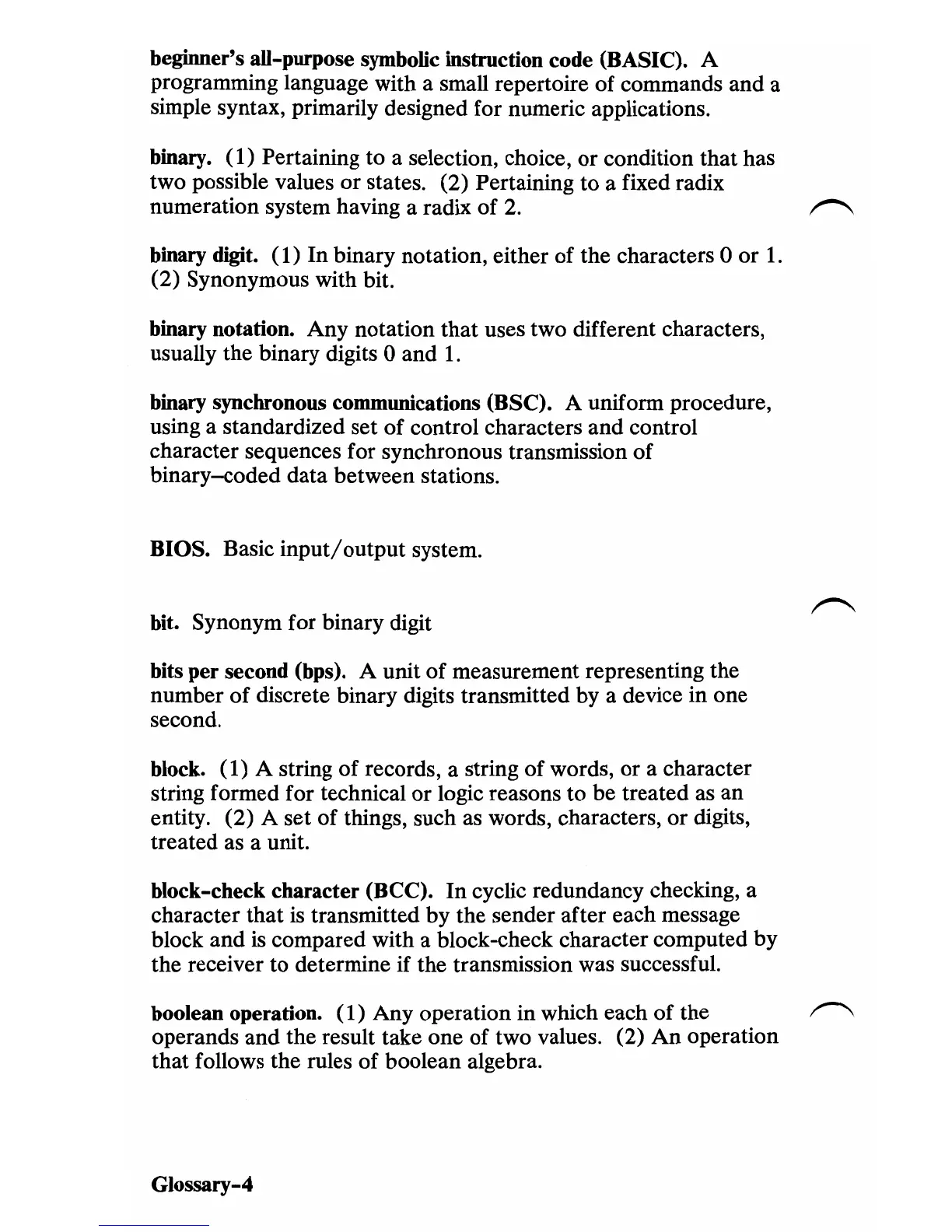beginner's all-purpose symbolic instruction code (BASIC). A
programming language with a small repertoire
of
commands and a
simple syntax, primarily designed for numeric applications.
binary.
(1)
Pertaining to a selection, choice, or condition that has
two possible values
or
states. (2) Pertaining to a fixed radix
numeration system having a radix of
2.
~
binary digit. (1) In binary notation, either of the characters 0
or
1.
(2) Synonymous with bit.
binary notation.
Any
notation
that
uses two different characters,
usually the binary digits 0 and
1.
binary synchronous communications (BSC). A uniform procedure,
using a standardized set of control characters and control
character sequences for synchronous transmission
of
binary-coded data between stations.
BIOS. Basic
input/output
system.
bit. Synonym for binary digit
bits per second (bps). A unit
of
measurement representing the
number
of
discrete binary digits transmitted
by
a device in one
second.
block. (1) A string
of
records, a string
of
words,
or
a character
string formed for technical
or
logic reasons to
be
treated as an
entity. (2) A set
of
things, such as words, characters,
or
digits,
treated as a unit.
block-check character (BCC).
In
cyclic redundancy checking, a
character
that
is
transmitted by the sender after each message
block and
is
compared with a block-check character computed by
the receiver to determine if the transmission was successful.
boolean operation. (1)
Any
operation in which each of the
~
operands
and
the result take one of two values. (2)
An
operation
that
follows the rules
of
boolean algebra.
Glossary-4
